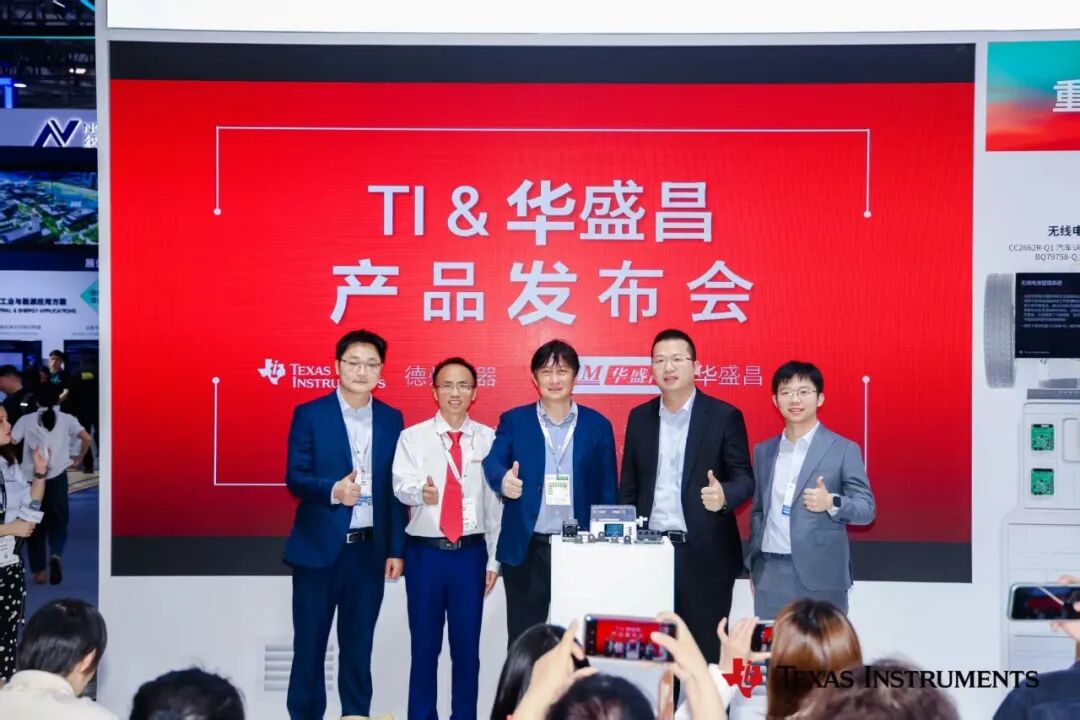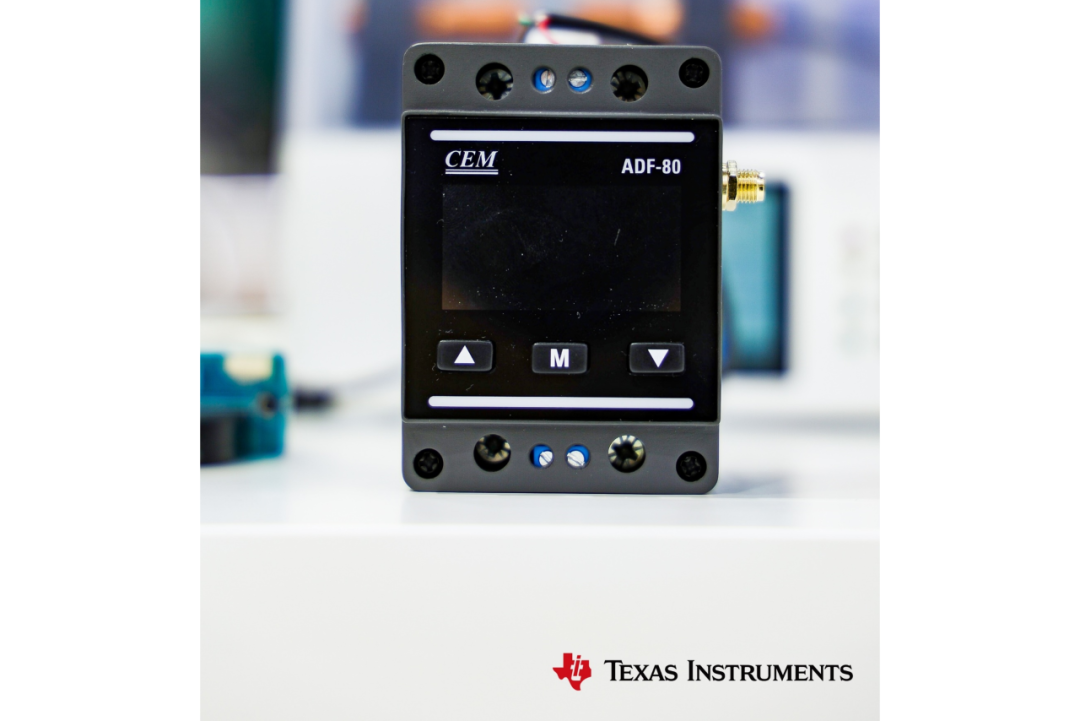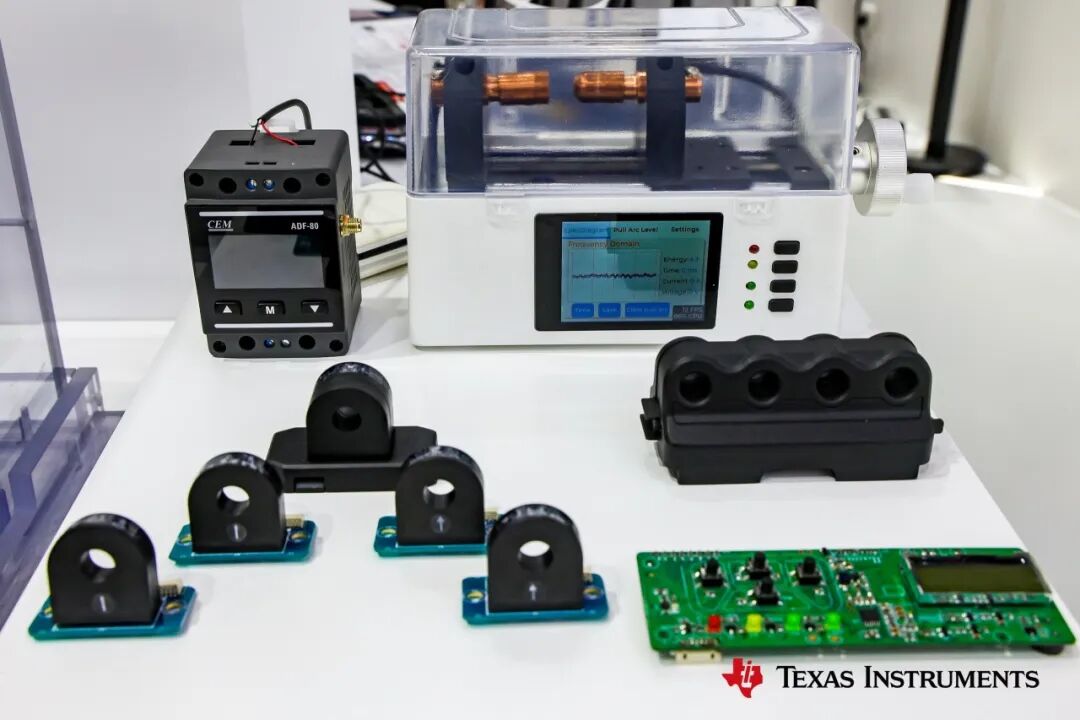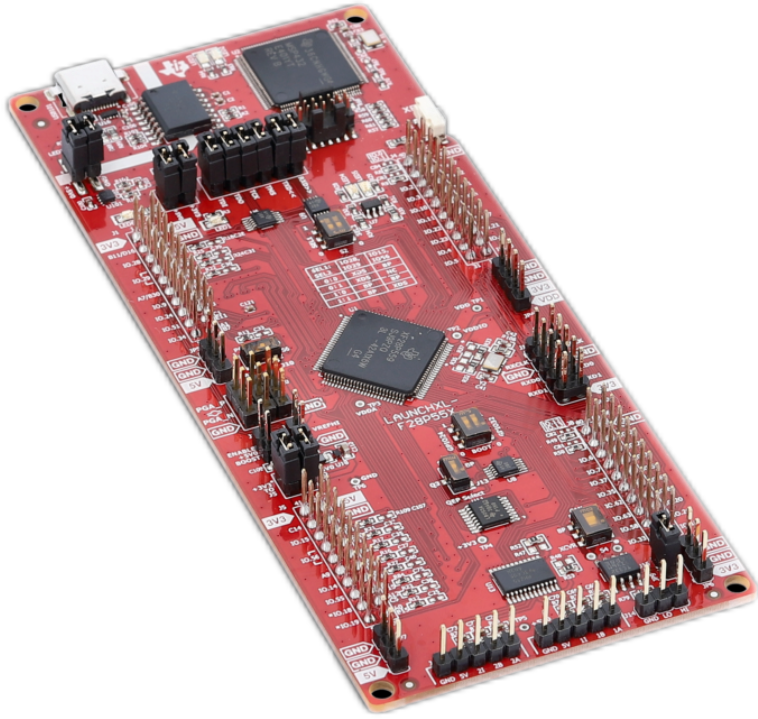Click the blue text above➞ and set it as a star➞ to receive updates★


During the Munich Shanghai Electronics Show on April 15, 2025, Texas Instruments (TI) and Shenzhen Huashengchang Technology Co., Ltd. (hereinafter referred to as “Huashengchang”) launched the AFD-80 Arc Signal Detector, designed for intelligent arc fault detection in photovoltaic power generation systems. This showcases the continuous exploration and innovative technological achievements of both parties, providing new solutions for safer, more reliable, efficient, and intelligent energy infrastructure.

Arc fault detection is the “lifeline” for ensuring the safe operation of photovoltaic power generation systems. It not only relates to the safety of the system itself but is also a necessary condition for ensuring efficient power generation and compliant operation. As photovoltaic technology develops towards higher voltage and larger capacity, its importance will become increasingly prominent. In photovoltaic power generation systems, the arc phenomenon poses a fire risk, making the accuracy and real-time nature of arc detection crucial.
AFD-80 Arc Signal Detector:
More stable, more precise, and quick to identify responses
Huashengchang’s AFD-80 single-channel arc fault detector is equipped with a Texas InstrumentsTMS320F28P55SJ AI chip, utilizing a patented arc detection model and big data to accurately analyze arc signals, displaying the signal spectrum in real-time. It can detect arc signals in as fast as 0.5 seconds and send out warning information via 4G network or RS485, with data recording and extraction analysis capabilities. The built-in 4G module can upload characteristic data to the cloud for training and evolution, making it more stable and precise.
-
250 kHZ sampling rate, millisecond-level quick detection, 0.5 seconds to output warning information
-
Compatible with maximum arc current Imax
-
Can detect up to 200 meters of cable length
-
500J energy detection capability
Traditional arc detection methods rely on empirical manual parameter adjustments, making it difficult to accurately distinguish when noise is close to the arc signal, with poor noise adaptability. They also cannot adapt quickly to the rapid changes in photovoltaic components, making them prone to failure as current continues to increase, cable lengths extend, and inverter power rises, resulting in poor scene adaptability. The AFD-80 single-channel arc fault detector has advantages in noise and scene adaptability, achieving higher precision with less computational workload, effectively improving the safety and reliability of photovoltaic power generation systems.

Swipe left or right to see more



-
AFD-80 is based on the TI TMS320F28P55x product series AI model functionality, featuring high-dimensional non-linear characteristics that accurately parse arc fault signals from data, with strong noise adaptability
-
AFD-80 is based on a neural network model that can continuously train, iterate, and learn new characteristic signals, with strong scene adaptability
-
TI TMS320F28P55x product series has powerful computing capabilities, capable of responding in milliseconds at a 250kHZ sampling rate for 4 channels, without losing critical characteristic frequency points
TI C2000™ MCU TMS320F28P55x
Product Series:
Integrates edge AI NPU,
Realizing smarter real-time control
For over 25 years, TI’s C2000™ series real-time microcontrollers (MCUs) have continuously expanded in fields such as motor control, power electronics, and industrial automation, providing exceptional performance. As a key solution in the AFD-80 arc signal detector, the C2000™ MCU TMS320F28P55x product series integrates an edge artificial intelligence (AI) neural processing unit (NPU), providing 24 high-precision PWM channels and up to 39 ADC channels, helping to reduce system costs and shrink system size, achieving faster, smarter, and safer real-time control.

-
Industry-leading real-time control performance
· Equipped with a C28x digital signal processor core, control law accelerator, and rich mathematical processing units, providing powerful computational capabilities
· Equipped with real-time control-focused control peripherals, including high-speed ADC modules, high-resolution PWM, and configurable logic, laying a solid hardware foundation for achieving high-performance real-time control
· TI C2000™ series has accumulated long-term successful experience in the field of real-time control
-
Integrated Neural Processing Unit (NPU)
· Using the integrated neural network processing unit (NPU) to run neural network models, it can alleviate the burden on the main CPU, with latency times 5 to 10 times lower than software implementations, enabling faster and more accurate decision-making
· Can train, learn, and adapt to different environments, helping the system achieve over 99% fault detection accuracy, making smarter decisions at the edge
-
Complete open ecosystem and toolchain,TI provides a complete edge AI application toolchain:
· User-friendly Edge AI Studio tool assists engineers in achieving the full process from data collection, model training to compilation and deployment
· Abundant hardware development board resources help customers quickly validate AI models
· Open free integrated development environment (CCSTUDIO IDE), graphical low-level configuration tool SysConfig, and rich community and tutorial resources help customers reduce R&D costs
Texas Instruments × Huashengchang:
Continuous collaboration and innovation
Huashengchang and TI have established a business relationship since 1998, focusing on environmental testing and electrical power instruments for technical collaboration. With the rise of the renewable energy market, the scale of cooperation between the two parties has continued to expand. Relying on TI’s C2000™ series chips with AI capabilities, Huashengchang has launched intelligent products such as arc detectors, promoting the digitalization and intelligence upgrade in the arc detection field.
TI’s semiconductor technology and Huashengchang’s scene-based R&D capabilities have always complemented each other, jointly expanding applications in industrial, automotive, and other fields. Looking to the future, TI and Huashengchang will continue to leverage each other’s strengths in their respective fields to launch more high-quality products and technical solutions for the market through technological innovation, scene deepening, and ecosystem expansion.
TI has always been committed to promoting the innovative electrification process, focusing on key areas such as photovoltaics, energy storage, electric vehicle charging facilities, and grid modernization. TI’s analog and embedded processing products and solutions cover the entire lifecycle of energy from generation, storage to application. In the future, TI will continue to deepen its efforts in the energy infrastructure field, relying on semiconductor technology and system solutions, collaborating with customers to innovate and help energy systems achieve safer, more reliable, efficient, and intelligent development goals.




Like·Collect·Recommend
Insights·Industry·Frontier